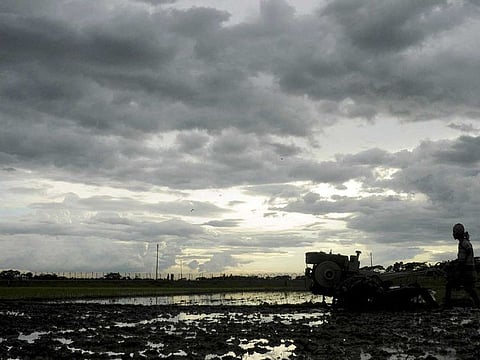Monsoon rains to arrive late in India, delaying heat relief
Delayed onset can impact arrival of rain in other parts of the country

New Delhi: India’s crucial monsoon season may arrive later than usual this year, delaying relief from scorching heat and potentially slowing the planting of some major crops.
The monsoon is expected to reach southern Kerala state on June 4 instead of the usual June 1, according to the India Meteorological Department (IMD). The prediction has a margin of error of four days.
Monsoon rains are the lifeblood of the Indian economy. The season, which runs from June to September each year, contributes about 75 per cent of the country’s annual rainfall and irrigates over half of its agricultural land.
Kerala is the first entry point of the monsoon in India.
While the monsoon may be delayed, it doesn’t affect the total precipitation India receives over the full season.
However, a delayed onset can impact the arrival of rain in other parts of the country, potentially affecting the planting of summer-sown crops like rice, corn and soybeans.
India has predicted a normal monsoon this year, with showers likely to be 96% of a long-term average. The arrival of monsoon will be anticipated after much of the country endured days of hot and humid weather in May.
The manner in which the IMD monitors the arrival of monsoon is by recording the rain data at the 14 weather stations located at Lakshadweep, Kerala and in Karnataka’s Mangaluru.
The officials monitor the rains starting from May 10 and if 60 per cent of the stations or more record 2.5 mm of rain for two continuous days, then it satisfies the criterion that the monsoon has arrived.
Another yardstick that the IMD looks is the strength of the wind.
Cloud movements are also a key indicator for the weathermen when it comes to announcing the monsoon.
In the past one decade, the IMD operational forecasts have turned to be correct.
Goa’s preparation
Meanwhile, Goa Chief Minister Pramod Sawant held a meeting of the State Disaster Management Authority and discussed several issues to prevent devastation and floods during monsoon.
For the last four years, Goa has witnessed floods in many areas causing damage to houses, agriculture areas and electric poles.
Taking a lesson from the past incidents, the government discussed restoration of properties if met with natural calamities.
“We can’t stop natural calamities, but if anything such happens then our team will be alert for restorations of road, power and water supply within 24 hours,” Sawant said.
He said that taking cue from past incidents, which had hit the state during the monsoon, the government has revamped the strategies.
“We have discussed the local contingency plan for mass rescue at sea and also about monsoon preparedness. We have human resources ready to tackle any situation and for the restoration of properties,” Sawant said.
He said that instructions have been given to all departments to work in regards to disaster management. “I also appeal to people to download Sachet national disaster alert app, so they can get the alerts of natural disasters,” Sawant said.
He said that the roles of all the departments for disaster management have also been discussed.
Last year in July, Water Resource Department Minister Subhash Shirodkar had said that floods are caused in coastal state due to climate change, recent rain patterns and other issues.
“In the last two to three years, due to climate change, recent rain patterns and other issues, floods are taking place. However, we are taking measures,” Shirodkar said.
Last year, due to incessant rain in Goa, many areas from both the districts of the coastal state had flooded.
Shirodkar had said that low lying areas get flooded after excess water is released from dams, but in future, measures in this regard will be taken.
Sign up for the Daily Briefing
Get the latest news and updates straight to your inbox



